The dam’s broken, the cat’s out of the bag, there’s no stopping now! With their € 12,498 Oso, Ibis have finally jumped on the electric wagon. The electric Yogi bear enters our huge 2023 eMTB group test with a futuristic design and Bosch Smart System motor. Was the wait worth it? And how does the Oso fare against the competition?

24.3 kg in size L | € 12,498 | Manufacturer’s website
Ibis have long held cult status among mountain bikers. The Northern-Californian brand has been designing and building mountain bikes since the early 80’s, and their creations, past and present, are nothing short of iconic. However, their portfolio has long excluded motorised mountain bikes – at least until now. In 2017, Ibis decided to bite the bullet and went ahead with the development of their first eMTB concept. And since this decision marked a big shift in the brand’s identity, they took the opportunity to revamp their whole image. Five years after the big electric yes, Ibis released the Oso, an eMTB with a new, refreshing image, which is also meant to reinvent the concept of eMTBing. Instead of specialising in one area of use, the Oso wants to be just as much fun uphill as it is downhill, while at the same time proving a trusted companion on long tours. For the 2023 summer season, the Oso will only be launched in one spec variant, which retails at € 12,498. Tipping the scales at 24.3 kg in size L, Ibis’ first eMTB combines a full carbon frame with a Bosch Performance Line CX Smart System motor and 750 Wh battery.

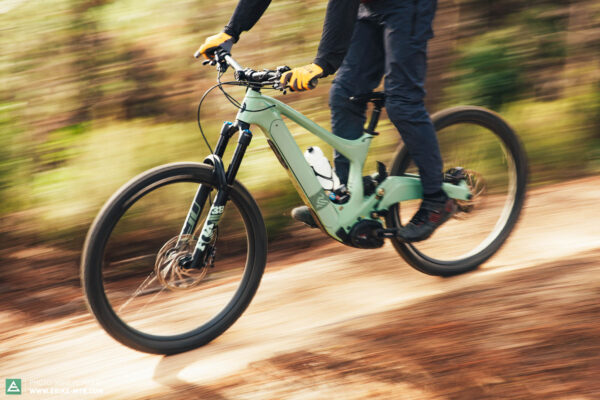

For an overview of the test fleet head to the group test: The best eMTB of 2023 – 30 models in review
Form follows function, function follows form – What sets the Ibis Oso apart from the competition?
The unique look of the Oso doesn’t make it special: All Ibis bikes look unique. With the Oso, however, the transition between design elements and functional elements is fluid. The moto style swingarm, for example, wasn’t borrowed from one of their analogue bikes and was designed from the ground up instead. Despite the curved design language, the Oso is distinctly recognisable as an Ibis. The Oso still relies on Ibis’ typical DW-Link suspension, which the American brand uses across their full-suspension range. At the same time, the design is highly functional. The smallest S and M frame sizes employ a shorter swingarm and smaller 27.5″ rear wheel. Sizes L and upwards, on the other hand, roll on a bigger 29″ rear wheel. With the standard FOX FLOAT X2 shock with 60 mm stroke, the rear suspension generates 155 mm travel. If you replace the shock with a longer-stroke, 65 mm air or coil shock, this increases to 170 mm of travel. A 170 mm FOX 38 Performance fork with minimally adjustable FIT Grip damper takes care of the rough stuff upfront. However, the frame is approved for the use of dual crown fork with up to 190 mm travel, underlining the versatile character of the Oso. However, it’s not just the wheel size, travel and swingarm length that change with the frame size but also the battery, which has 625 Wh capacity in size S and 750 Wh from size M upwards. Moreover, Ibis adapt the seat tube angle to the respective frame size to ensure consistent handling across the board.
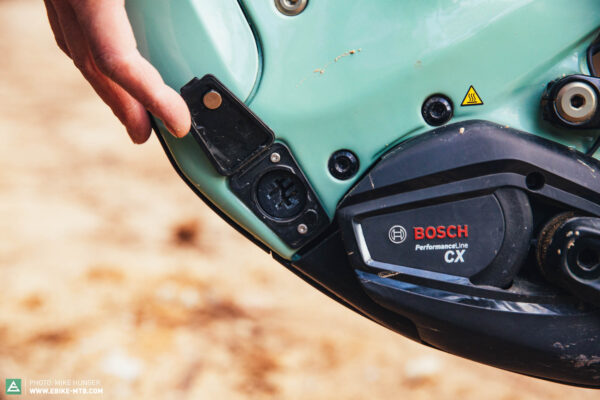
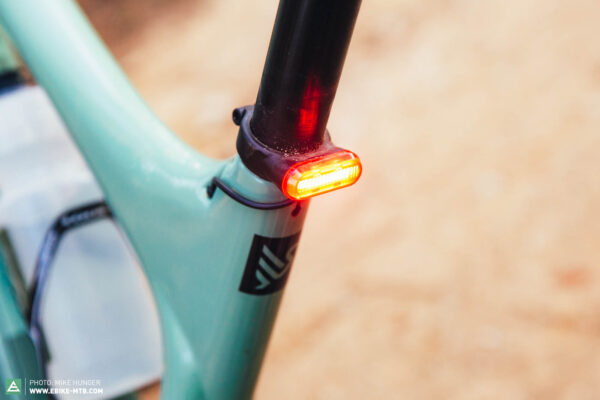

The battery can be removed from the side of the down tube for external charging, and is secured with a 6 mm bolt instead of a key lock – and so is its cover. The battery supplies electricity not only to the powerful Bosch Performance Line CX Smart System motor, but also to the Lupine SL F headlight and matching C14 taillight. The headlight features a practical high beam function, taking the edge off late night commutes and twilight trail sessions. The taillight – the only one in this test, by the way – is neatly integrated into the seat post clamp. The cockpit looks rather crowded, which is partly due to the two additional cables of the headlight. Apart from the fork’s basic FIT GRIP damper, the rest of the spec is thoroughly coherent. Particularly noteworthy are the MAXXIS tires in soft MaxxGrip rubber compound and robust Doubledown casing, which ensure tons of grip and good puncture protection.
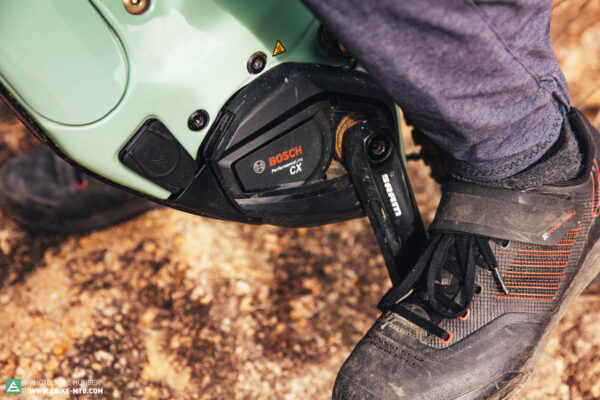
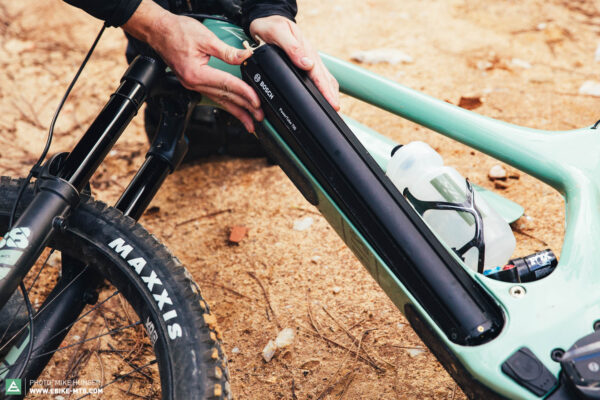
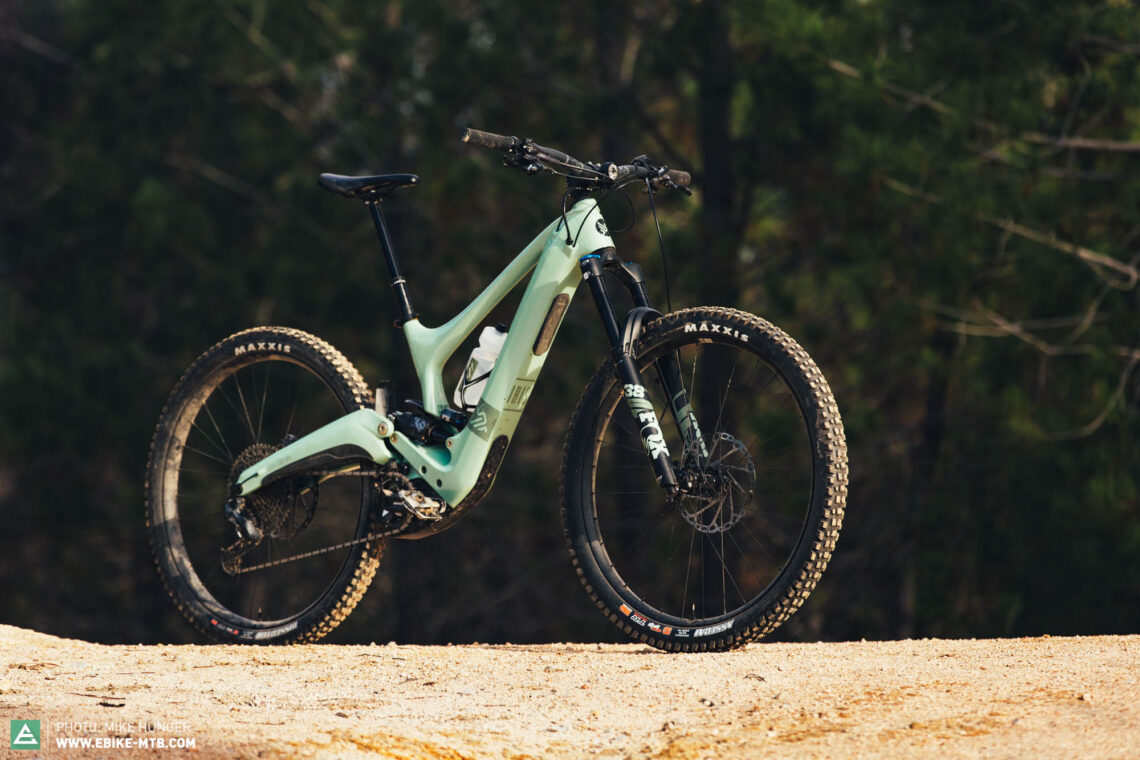
Ibis Oso
€ 12,498
Specifications
Motor Bosch Performance Line CX 85 Nm
Battery Bosch PowerTube 750 Wh
Display Kiox 300
Fork FOX 38 Performance 170 mm
Rear Shock FOX FLOAT X2 Performance Elite 155 mm
Seatpost BikeYoke REVIVE 185 mm
Brakes Shimano XT 220/220 mm
Drivetrain SRAM GX 1x12
Stem Ibis 50 mm
Handlebar IBIS Carbon 800 mm
Wheelset Blackbird Send 29"
Tires MAXXIS ASSEGAI 3C MaxxGrip Doubledown/MAXXIS DISSECTOR 3C MaxxGrip Doubledown 2.5/2.5
Technical Data
Size S M L XL
Weight 24.3 kg
Perm. total weight 150 kg
Max. payload (rider/equipment) 125 kg
Trailer approval no
Kickstand mount no
Specific Features
integrated Lupine lights
Tuning tip: Clean up the cable mess with zip ties
Nimble bird or chilled-out bear? – What is the Ibis Oso capable of on the trail?
The Ibis is a bird, but Oso means bear in Spanish. Which one is it then? On tours, it’s as chilled as a plantigrade and places you in a relaxed pedalling position. The sensitive rear suspension absorbs impacts, while the powerful Bosch motor pushes you up steep fire roads without batting an eyelid. When the big battery encourages you to push yourself further into the forest, the Lupine light system allows you to find your way back home through the daunting twilight. The countless features and high riding comfort make the Oso one of the best tourers in the entire test field. When you decide to swap a relaxed Cali-coast cruise for a bit of uphill trail action, the Oso shows its nimble side. With the dropper fully extended, the Ibis positions you far back over the rear wheel and sinks deep into its travel. The suspension favours plushness over efficiency, but this is compensated for by the powerful Bosch motor, which allows you to grind your way up the mountain at full pelt. Despite the rear-heavy position, the front wheel remains planted on the ground. The shallow-profiled DISSECTOR rear tire generates decent amounts of traction on dry terrain but easily spins out of control on wet, loose ground, preventing the Oso to keep up with the best climbers in this test, like the Orbea WILD.

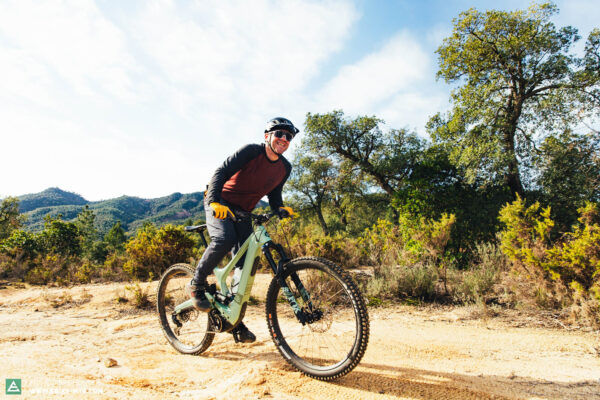
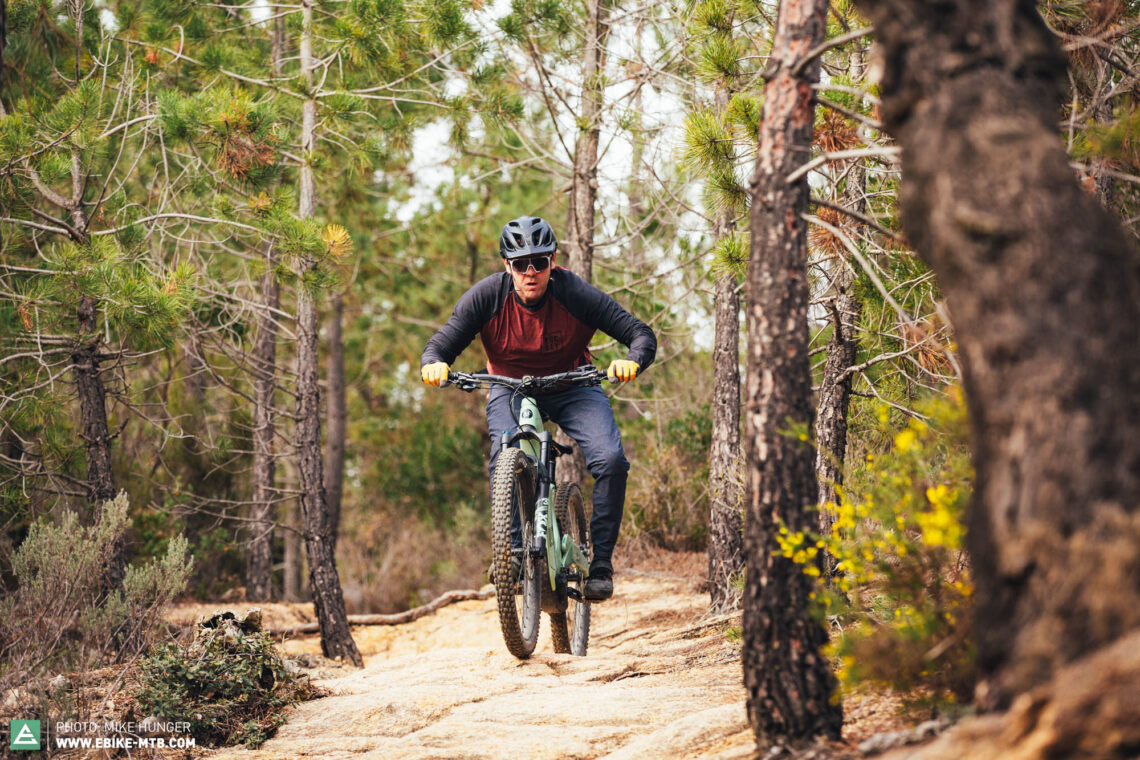
If a real bear spots you and forces you to shred for your dear life, the Oso integrates you nicely between its wheels. Downhill, the weight is evenly distributed between the front and rear, ensuring equal amounts of traction on both wheels. The rear suspension responds sensitively but still offers enough support and progression to take the edge off nasty hits. Only the mid-stroke lacks a smidge of support and well-defined feedback. On narrow flow trails, the Oso requires an active riding style to implement spontaneous direction changes and struggles to match the outstanding fun factor of the agile Yeti 160E and Orbea WILD. In super-fast and rough trail sections, you’ll notice that the FOX 38 Performance fork doesn’t work as efficiently as the rear suspension. The front end provides tons of feedback, feeling harsh at times and inviting you to roll over obstacles rather than looking for a precise line around them. Here, too, the Oso can’t keep up with the best eMTB in this test.
Is it just art or is it capable of something? With the Ibis Oso, the transition from design to function is fluid.
| Size | S | M | L | XL |
|---|---|---|---|---|
| Top tube | 573 mm | 607 mm | 638 mm | 669 mm |
| Seat tube | 394 mm | 414 mm | 414 mm | 427 mm |
| Head tube | 90 mm | 106 mm | 122 mm | 139 mm |
| Head angle | 64.0° | 64.0° | 64.0° | 64.0° |
| Seat angle | 77.0° | 77.0° | 78.0° | 79.0° |
| Chainstays | 439 mm | 439 mm | 444 mm | 444 mm |
| BB Drop | 31 mm | 31 mm | 31 mm | 31 mm |
| Wheelbase | 1,206 mm | 1,242 mm | 1,294 mm | 1,341 mm |
| Reach | 430 mm | 460 mm | 500 mm | 540 mm |
| Stack | 621 mm | 635 mm | 650 mm | 665 mm |
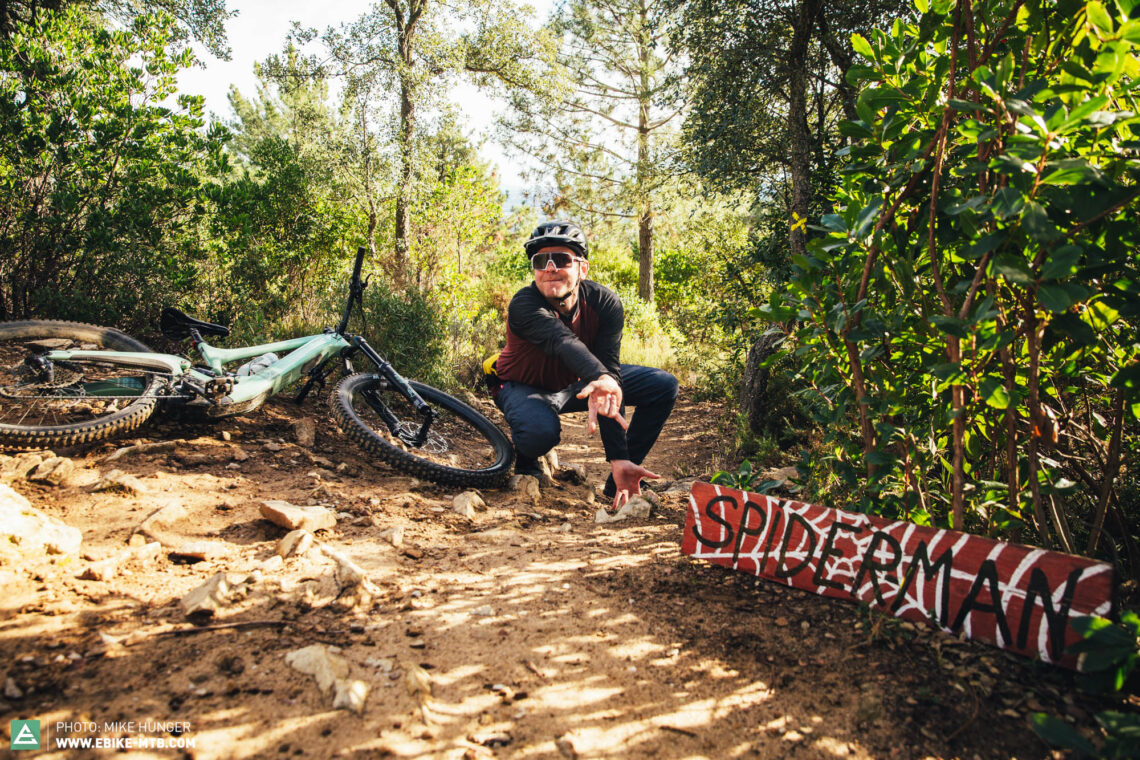
Jersey Rocday Stage LS | Pants Rocday Roc pants | Shoes Five Ten Hellcat Pro
Gloves Rocday Elements
Who should take a closer look at the Ibis Oso and who should look elsewhere?
The Ibis Oso stands out from the crowd with its unique, polarising design. If you can live with the curved silhouette and relatively steep €12,498 price of the only available spec variant, you’ll get a strong tourer with predictable, beginner-friendly handling. However, if you’re looking for a performance oriented eMTB for the most demanding trails, you’ll find better alternatives in this test field, like the Orbea WILD.
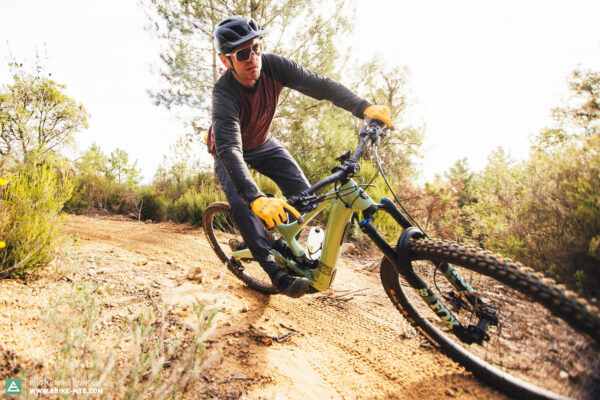

Riding Characteristics
DESIGN
- unbalanced
- coherent
USER FRIENDLINESS
- cumbersome
- clever
VALUE FOR MONEY
- flop
- top
TREKKING & COMMUTING SUITABILITY
- low
- high
HANDLING
- demanding
- intuitive
FUN FACTOR
- boring
- lively
Intended Use
Gravel roads
Technical climbs
Flowtrail descents
Technical descents
Conclusions about the Ibis Oso
Ibis’ eMTB debut was a great success. With its unique design and the high level of functionality, the Ibis is suitable for a wide range of applications. Above all, the good-natured handling makes it a good choice for beginners and experienced riders alike. For fast, performance-oriented riders, however, there are sportier all-rounders in this test field, which is why the Ibis can’t secure victory in our 2023 eMTB group test.
Tops
- Sensitive rear suspension
- Unique design
- Practical everyday features
Flops
- Fork performance is subpar
- Crowded cockpit
You can find out more about at ibiscycles.com
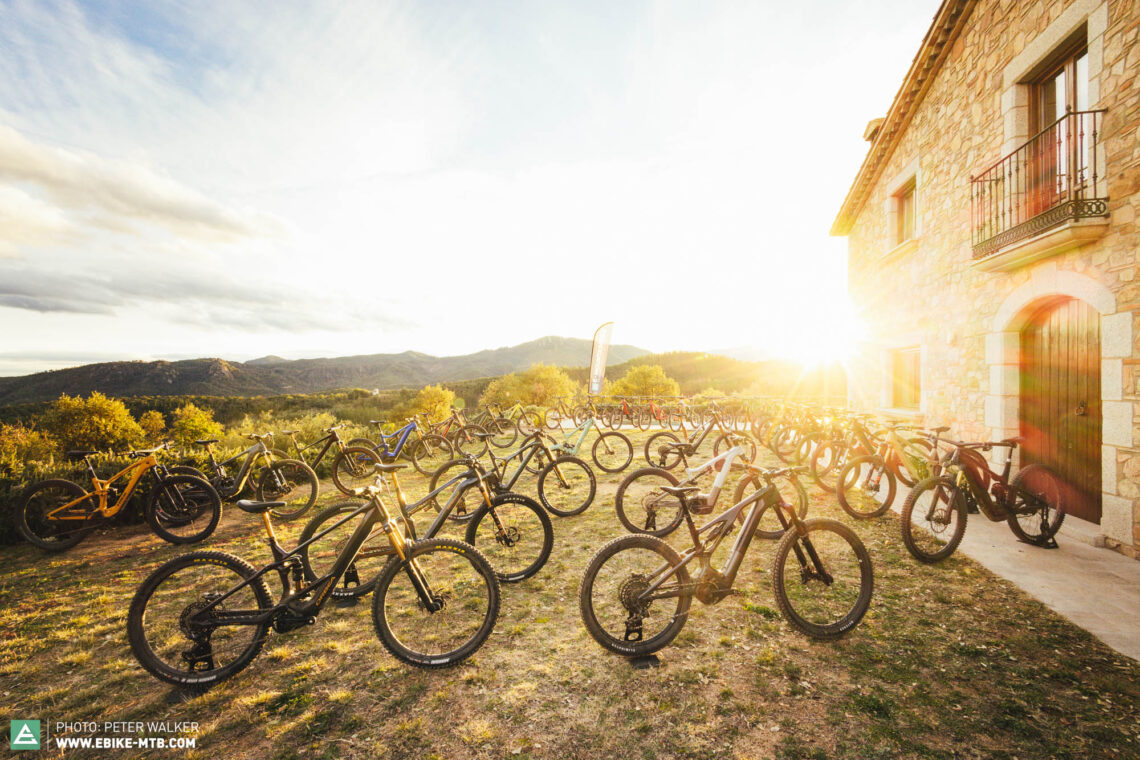
The test field
For an overview of the test fleet head to the group test: The best eMTB of 2023 – 30 models in review
All bikes in test: Berria Mako Hybrid GT LTD (Click for review) | Bulls SONIC EVO SL EN-1 (Click for review) | Cannondale Moterra Neo Carbon LT1 (Click for review) | Flyer Uproc X 9.50 (Click for review) | Focus SAM² 6.9 (Click for review) | Focus JAM² 6.9 (Click for review) | Focus Jam² SL 9.9 (Click for review) | Forestal Siryon Diōde (Click for review) | Giant Trance X Advanced E+ Ltd (Click for review) | Haibike Lyke CF SE (Click for review) | Ibis OSO | KTM Macina Prowler Exonic (Click for review) | MERIDA eONE-SIXTY 975 (Click for review) | Mondraker Crafty Carbon XR LTD (Click for review) | Moustache Samedi 29 Game 11 (Click for review) | Orbea Rise M-Team (Click for review) | Orbea WILD M-LTD (Click for review) | Pivot Shuttle SL Pro X01 (Click for review) | Pivot Shuttle LT Team XTR (Click for review) | Radon Deft 10.0 (Click for review) | Rotwild R.X735 Ultra (Click for review) | Santa Cruz Heckler MX XO1 AXS RSV (Click for review) | SCOTT Lumen eRide 900 SL (Click for review) | Simplon Rapcon Pmax TQ (Click for review) | Specialized Turbo Levo Expert (Click for review) | Transition Repeater AXS Carbon (Click for review) | Thömus Lightrider E Ultimate (Click for review) | Trek Fuel EXe 9.9 XX1 AXS (Click for review) | UNNO Mith Race (Click for review) | Yeti 160E T1 (Click for review)
Did you enjoy this article? If so, we would be stoked if you decide to support us with a monthly contribution. By becoming a supporter of E-MOUNTAINBIKE, you will help secure a sustainable future for high-quality cycling journalism. Click here to learn more.
Words: Rudolf Fischer Photos: Mike Hunger









